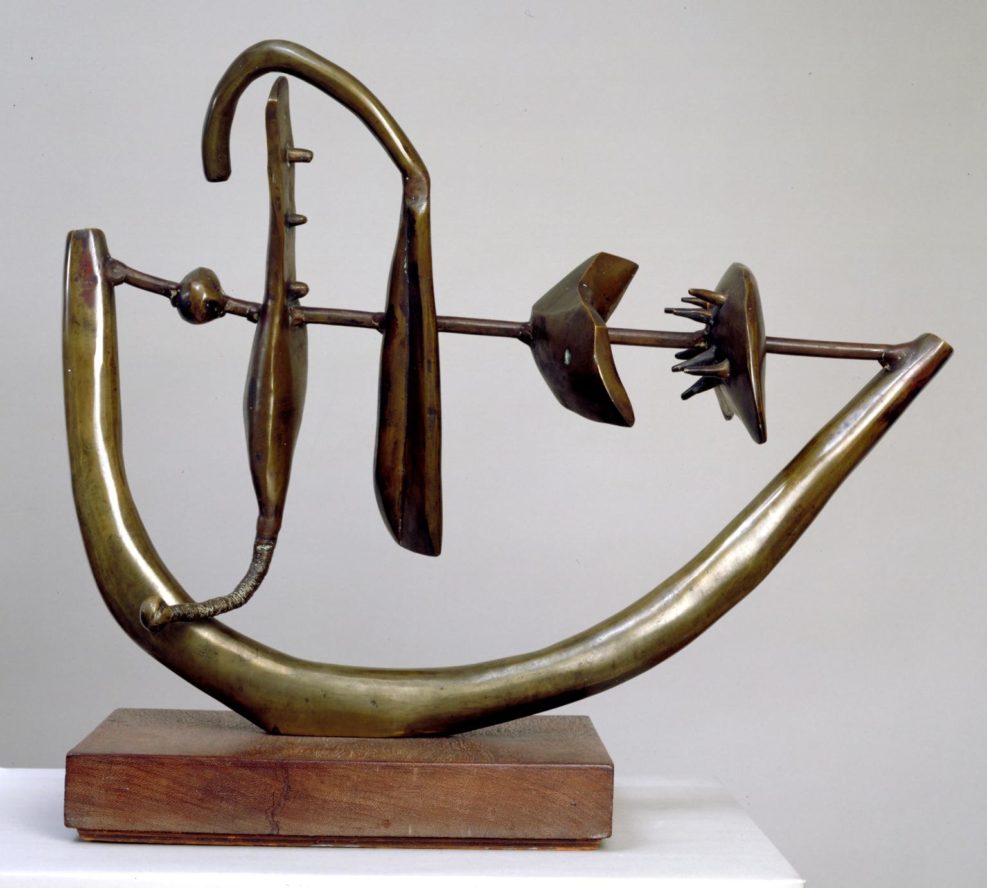1949
Forms on a Bow
author
Eduardo Luigi Paolozzi
description
The Tate Gallery, London (the UK).
Bronze, oak stand.
During his two-year stay in Paris, Eduardo Paolozzi was fond of Surrealism. He was particularly influenced by famous avant-garde sculptor Alberto Giacometti, who used forms that simultaneously resembled living bodies and mechanical structures. The bronze sculpture is a bow, on the bowstring of which there are several objects difficult to identify. They are similar to parts of some plant or living creature and seem to interact with each other, attacking with the help of strange tentacles and defending themselves with sharp spiky teeth. The work demonstrates the correlation of form and emptiness when the surrounding space becomes the same part of a work of art as its bronze elements.
